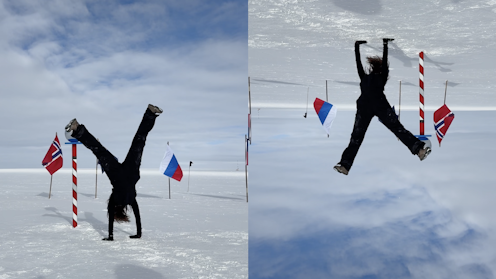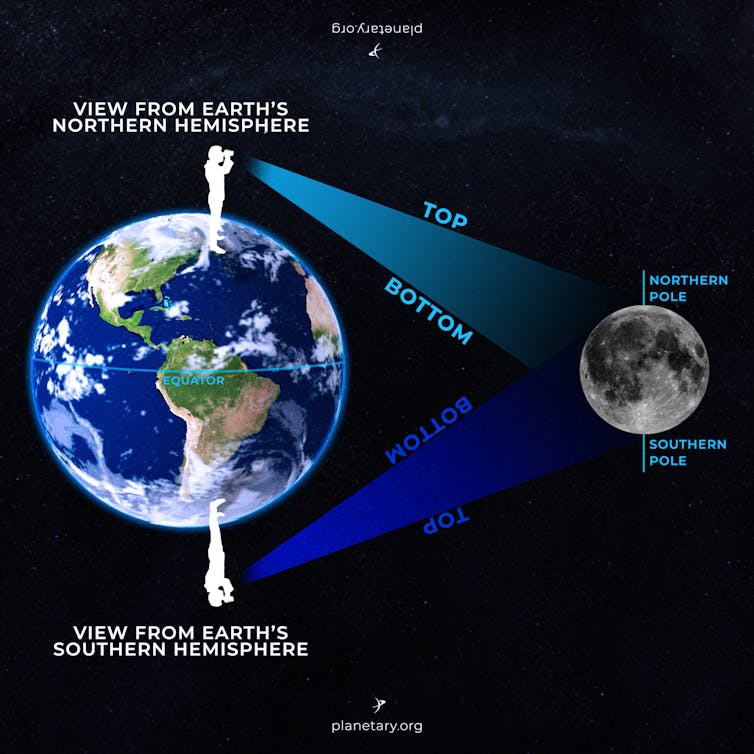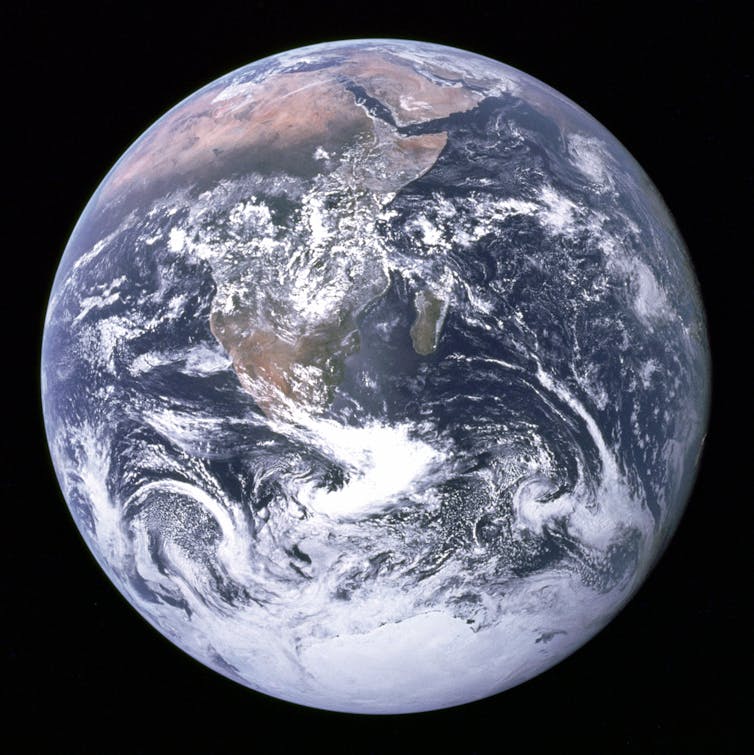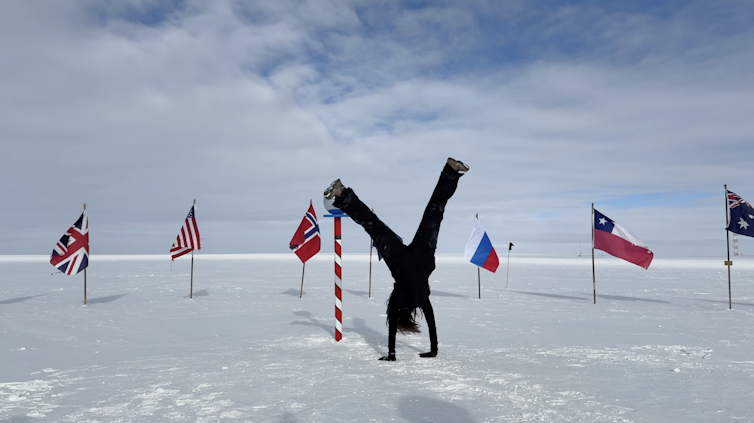Are people at the South Pole upside down?
- Astrophysicist Abigail Bishop shares her experience living at the South Pole for seven weeks, where she noticed some differences that made it feel like the world was “flipped over” from what she was used to.
- The main difference Bishop observed was how the Moon and constellations appeared in the night sky, with the face of the man on the Moon being flipped over and craters appearing on the bottom instead of the top.
- Bishop explains that this phenomenon occurs because people living in the Southern Hemisphere see the world from a different perspective than those in the Northern Hemisphere, resulting in seemingly opposite orientations.
- From an astronomical perspective, astronauts on space missions can see one side of the Earth’s sphere at once, and would see people at the South Pole standing upside down from those at the North Pole.
- Bishop uses a simple analogy to explain why this happens: just as our fingers point “down” when holding a baseball between them, but appear to point in different directions from a friend’s perspective, Earth’s gravitational pull points us all towards its center, creating the illusion of being “up” or “down” depending on one’s location.

Curious Kids is a series for children of all ages. If you have a question you’d like an expert to answer, send it to CuriousKidsUS@theconversation.com.
Are people on the South Pole walking upside down from the rest of the world? – Ralph P., U.S.
When I was standing at the South Pole, I felt the same way I feel anywhere on Earth because my feet were still on the ground and the sky was still overhead.
I’m an astrophysicist from Wisconsin who lived at the South Pole for seven weeks from December 2024 to January 2025 to work on an array of detectors looking for extremely high energy particles from outer space.
I didn’t feel upside down, but there were some differences that still made the South Pole feel flipped over from what I was used to.
As someone who loves looking for the Moon, I noticed that the face of the man on the Moon was flipped over, like he went from 🙂 to 🙃. All the craters that I was used to seeing on the top of the Moon from Wisconsin were now on the bottom – because I was looking at the Moon from the Southern Hemisphere instead of the Northern Hemisphere.

The Planetary Society, CC BY-SA
After noticing this difference, I remembered something similar in the night skies of New Zealand, a country near Antarctica where my fellow travelers and I got our big red coats that kept us warm at the South Pole. I had looked for Orion, a constellation that in the Northern Hemisphere is viewed as a hunter holding a bow and drawing an arrow from his quiver. In the night sky of New Zealand, Orion looked like he was doing a handstand.
Everything in the sky felt upside down and opposite, compared with what I was used to. A person who lives in the Southern Hemisphere might feel the same about visiting the Arctic or the North Pole.

NASA
An out-of-this-world perspective
To understand what’s happening, and why things are really different but also feel very much the same, it might be useful to back up a bit from Earth’s surface. Like into outer space. On space missions to the Moon, astronauts could see one side of the Earth’s sphere at once.
If they had superhero vision, an astronaut would see the people at the South Pole and North Pole standing upside down from each other. And a person at the equator would look like they were sticking straight out the side of the planet. In fact, even though they might be standing on the equator, people in Colombia and Indonesia would also look like they were upside down from each other, because they would be sticking out from opposite sides of the Earth.
Of course, if you asked each person, they would say, “My feet are on the ground, and the sky is up.”
That’s because Earth is essentially a really big ball whose gravitational pull on every one of us points to the center of the planet. The direction that Earth pulls us in is what people call “down” all over the planet. Think about holding a baseball between your pointer fingers. From the perspective of your fingertips on the ball’s surface, both are pointing “down.” But from the perspective of a friend nearby, your fingers are pointing in different directions – though always toward the center of the ball.
These relationships between people on the Earth’s surface are good for a little bit of fun, though. While I was at the South Pole, I pointed my body in the same direction as my friends in Wisconsin – by doing a handstand. But if you look at the picture the other way around, it looks like I’m holding up the entire planet, like Superman.

Abigail Bishop
Hello, curious kids! Do you have a question you’d like an expert to answer? Ask an adult to send your question to CuriousKidsUS@theconversation.com. Please tell us your name, age and the city where you live.
And since curiosity has no age limit – adults, let us know what you’re wondering, too. We won’t be able to answer every question, but we will do our best.
![]()
Abigail Bishop receives funding from National Science Foundation Award 2013134 and has received funding from the Belgian American Education Foundation.
